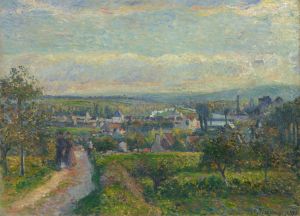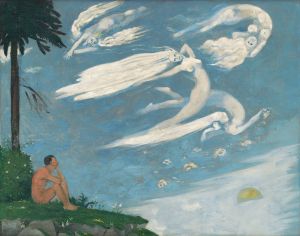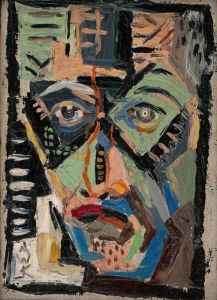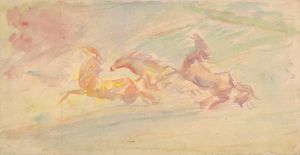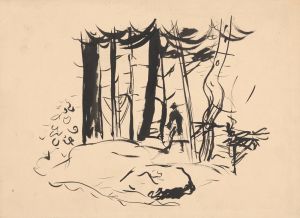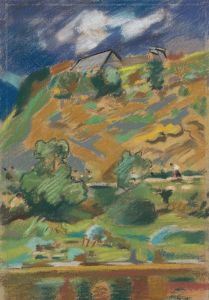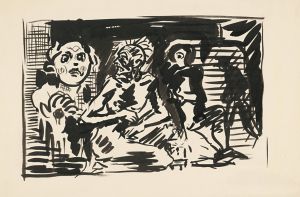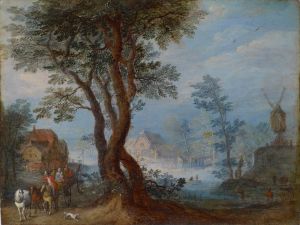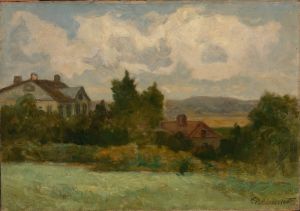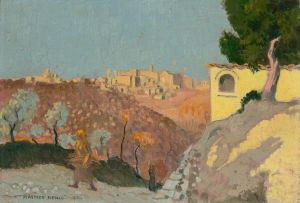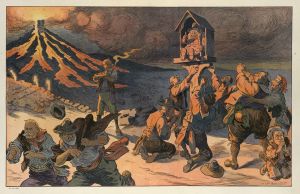
Little Houses by the Forest
A hand-painted replica of Arnold Peter Weisz-Kubínčan’s masterpiece Little Houses by the Forest, meticulously crafted by professional artists to capture the true essence of the original. Each piece is created with museum-quality canvas and rare mineral pigments, carefully painted by experienced artists with delicate brushstrokes and rich, layered colors to perfectly recreate the texture of the original artwork. Unlike machine-printed reproductions, this hand-painted version brings the painting to life, infused with the artist’s emotions and skill in every stroke. Whether for personal collection or home decoration, it instantly elevates the artistic atmosphere of any space.
Arnold Peter Weisz-Kubínčan was a Slovak artist known for his contributions to modern art in the early 20th century. His work often reflected the cultural and social dynamics of his time, and he was part of a broader movement of artists who sought to express new ideas through innovative techniques and perspectives. One of his notable works is "Little Houses by the Forest," which exemplifies his unique style and artistic vision.
"Little Houses by the Forest" is a painting that captures a serene and picturesque scene, characteristic of Weisz-Kubínčan's interest in landscapes and the interplay between human habitation and nature. The painting depicts a cluster of small houses nestled at the edge of a forest, suggesting a harmonious coexistence between the built environment and the natural world. This theme is recurrent in Weisz-Kubínčan's work, reflecting his appreciation for the tranquility and beauty of rural settings.
The composition of "Little Houses by the Forest" is marked by its use of color and form. Weisz-Kubínčan employs a palette that is both vibrant and soothing, with earthy tones that evoke the natural surroundings and brighter hues that bring the houses to life. The brushwork is expressive yet controlled, allowing for a detailed depiction of the scene while maintaining an overall sense of harmony and balance.
Weisz-Kubínčan's technique in this painting demonstrates his mastery of blending traditional and modern elements. While the subject matter is rooted in a realistic portrayal of a rural landscape, the execution incorporates elements of abstraction and modernism. This approach places Weisz-Kubínčan within the broader context of early 20th-century art movements, where artists were increasingly experimenting with new forms and techniques to capture the changing world around them.
The historical context of Weisz-Kubínčan's work is significant. Born in 1898 in Slovakia, he lived through a period of great change and upheaval in Europe. His art reflects the tensions and transformations of his time, as well as a deep connection to his Slovak heritage. "Little Houses by the Forest" can be seen as an expression of this connection, highlighting the simple beauty and enduring presence of the Slovak countryside amidst the broader currents of modernity.
Weisz-Kubínčan's contributions to art were cut short by the tragic events of World War II. As a Jewish artist, he faced persecution under the Nazi regime, and his life and career were tragically ended in the Holocaust. Despite this, his work has continued to be celebrated for its artistic merit and historical significance. "Little Houses by the Forest" stands as a testament to his talent and vision, offering viewers a glimpse into the world as he saw it.
Today, Weisz-Kubínčan's paintings are appreciated for their aesthetic qualities and their ability to convey a sense of place and time. "Little Houses by the Forest" remains an important piece within his oeuvre, embodying the themes and techniques that define his artistic legacy. Through this work, Weisz-Kubínčan invites us to reflect on the relationship between humanity and nature, and the enduring beauty of the world around us.






